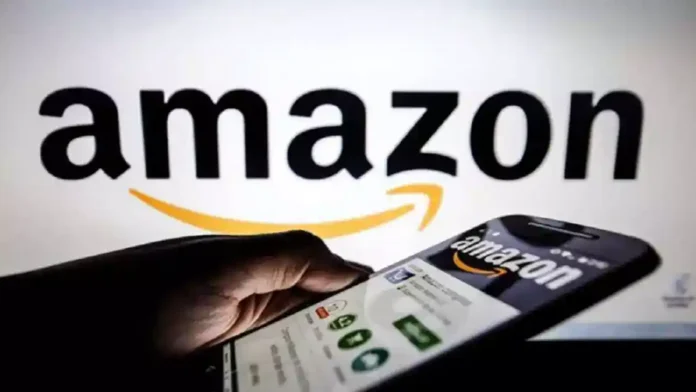Amazon.com Inc. merchants have found themselves ensnared in an economic bind. Earlier, the e-commerce giant introduced changes to the fees it imposes on them — essentially shifting more of its operating costs onto the small businesses that constitute the bulk of the products sold on the site. Complicating matters for merchants, shoppers are opting for lower-priced options.
During the initial four months of the year, American consumers have shown a growing preference for the most budget-friendly products across almost every category, as per a Thursday report by Adobe Inc. This trend poses challenges in passing price increases onto shoppers, leaving online merchants grappling with profitability issues.
Duncan Freer, a seller of weighted blankets and sleep masks on Amazon, anticipates his profit margin to plummet from 20% to 8% due to the impact of the updated fees. One of these fees, implemented in March, imposes charges on shipments directed to the company’s fulfillment centers. Freer noted that this will escalate the expense of shipping two pallets of his products to Amazon to over $800, marking a four-fold increase compared to October. Although Amazon has reduced the fulfillment cost for each customer order, Freer mentioned that it only marginally mitigates the impact of the new fees.
Continue Exploring: Amazon India adjusts seller fees, impacts various categories starting April 7
“The relentless expansion of Amazon is just relentless,” remarked the Chicago entrepreneur, whose annual sales on the platform tally around $500,000. “It feels like a blow to the stomach.”
Amazon stated that the newly implemented fees are aimed at aligning with its distribution expenses across the US, facilitating the delivery of a wider range of items within a single day, thereby enhancing overall sales for online merchants. Interestingly, certain fees have decreased. For instance, in January, Amazon reduced commissions for vendors of budget-friendly apparel, a maneuver perceived by merchants as a strategy to counter the competition posed by Chinese fast-fashion startup Shein.
A company spokeswoman, Mira Dix, sent out an email stating, “We estimated that sellers will on average see an increase of $0.15 per unit sold when we announced these new fee changes in December, which is significantly less than the average fee increases announced by other fulfilment service providers.” “We have observed that the actual impact is even smaller as sellers adjust to these changes, and many more sellers are seeing a decrease in the average fees that they are paying to Amazon.”
However, numerous merchants argue that Amazon is primarily reaping the benefits of the elevated fees, a claim supported by the company’s financial results. Revenue generated from seller services, encompassing the widely used Fulfillment by Amazon logistics service, has consistently surged at a swifter pace compared to fulfillment expenses over the past seven quarters. Amazon’s seller services revenue reached $34.6 billion for the period concluding on March 30, marking a 36.5% increase from two years prior. This growth significantly outpaced the expansion of its fulfillment costs, which totaled $22.3 billion during the same period.
In the latest earnings report, the remarkable performance of the cloud computing division eclipsed the escalating friction between Amazon and its sellers. Amazon Web Services (AWS) contributed over 60% of the company’s operating income in the first quarter, despite generating less than 20% of the total revenue. However, sales in the primary e-commerce sector expanded at a slower rate compared to the increase in units sold, signaling that consumers are exercising budgetary caution. Amazon’s marketplace model facilitates continued growth during a slowdown by levying fees for advertising and logistics services.
Antonio Bindi, a Brazilian entrepreneur with five years of experience selling home storage and kitchen products on Amazon, expressed frustration with the escalating complexity of the fee structure. Of particular concern is a new levy introduced in April, which is incurred when sellers’ inventory levels drop. This additional charge compounds with existing storage fees, which rise when slow-selling inventory remains in Amazon warehouses for extended periods. Managing these complexities has become overwhelming for his team of 20, prompting him to streamline operations by reducing his catalog from 500 products to 400.
He reflected, “Half a decade ago, Amazon served as a platform that streamlined business operations, allowing entrepreneurs to concentrate on their core strengths, such as crafting exceptional products. You could simply dispatch your goods to Amazon, and they handled the rest. Nowadays, navigating its complexities demands an entire department. The expenses have become prohibitive.”
Continue Exploring: Amazon launches low-cost grocery delivery subscription for Prime members and EBT users
Neil Ayton, a seller based in San Francisco, specializes in offering golf yardage books, yoga gear, and pickleball equipment. Among his popular items is a yoga stick designed for practitioners’ stretching routines, measuring at 59 inches, the maximum length to avoid higher fee tiers. However, earlier this year, Ayton observed that Amazon had reduced the size limit, rendering his yoga sticks one inch too long. Consequently, shipping costs for each product surged from $10 to $26, leading Ayton to incur a loss of $3 per sale. In an attempt to mitigate the situation, he recalled hundreds of yoga sticks from Amazon’s warehouses and trimmed an inch off each one. However, Ayton lamented that this action only served to minimize his losses. Consequently, he is now contemplating winding down his Amazon business.
“Amazon sort of lures you in,” Ayton remarked. “It’s fantastic when everything runs smoothly, but you’re always bracing for the unexpected twist just around the corner.”





